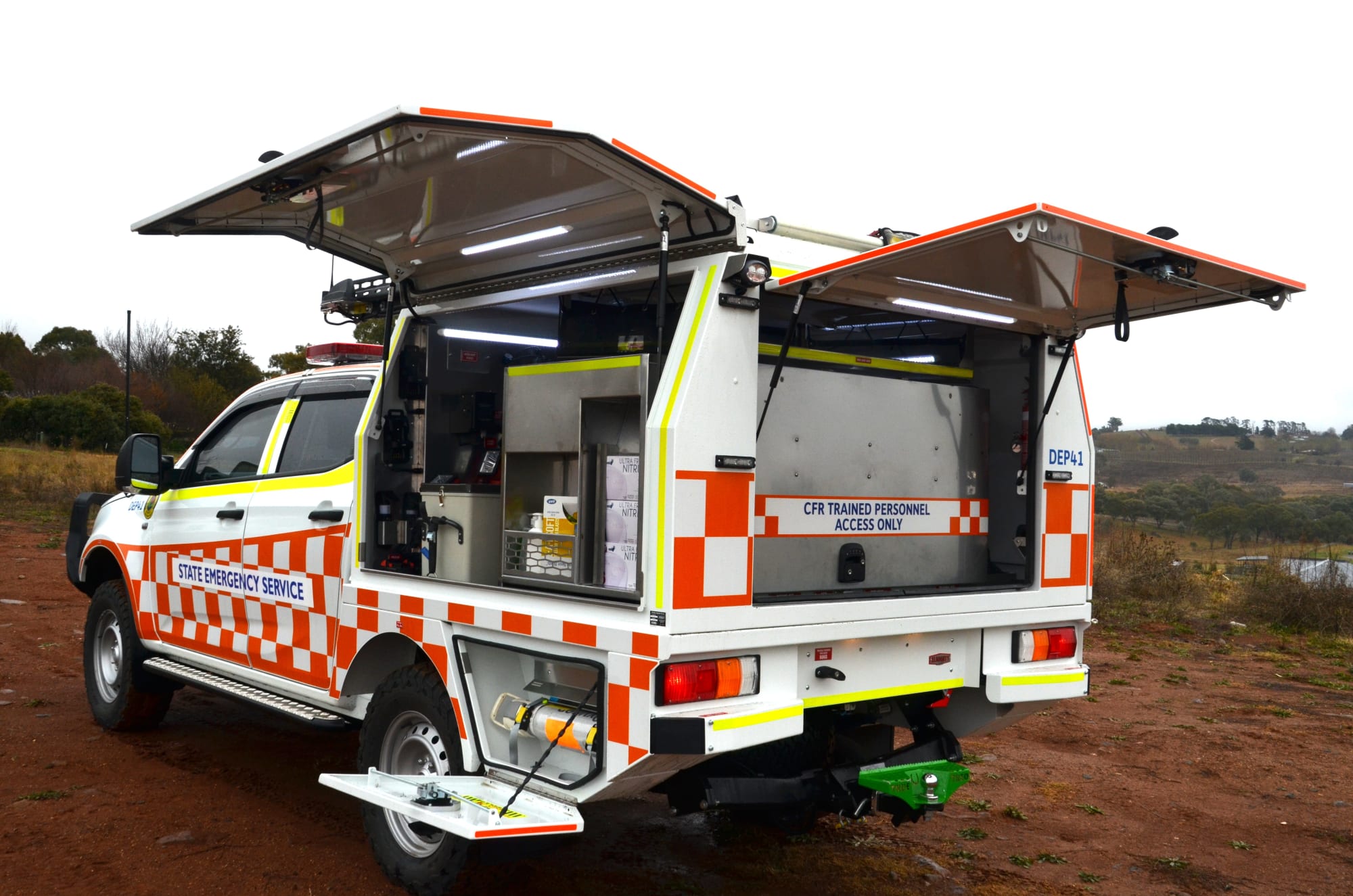Invest
Households carried the quarter: what Australia’s upside GDP surprise means for strategy now
Invest
Households carried the quarter: what Australia’s upside GDP surprise means for strategy now
Australia’s economy expanded faster than expected in the June 2025 quarter, with GDP up 0.6 per cent quarter-on-quarter and 1.8 per cent year-on-year — the strongest pace in two years. The kicker isn’t the headline; it’s the mix: household and government consumption did the heavy lifting while public investment slumped. Bank economists point to rising disposable incomes from lower income taxes, easing inflation and ongoing rate cuts as the spark. For leaders, this is a demand pivot that reshapes pricing, hiring, inventory and capex decisions through FY26.
Households carried the quarter: what Australia’s upside GDP surprise means for strategy now
Australia’s economy expanded faster than expected in the June 2025 quarter, with GDP up 0.6 per cent quarter-on-quarter and 1.8 per cent year-on-year — the strongest pace in two years. The kicker isn’t the headline; it’s the mix: household and government consumption did the heavy lifting while public investment slumped. Bank economists point to rising disposable incomes from lower income taxes, easing inflation and ongoing rate cuts as the spark. For leaders, this is a demand pivot that reshapes pricing, hiring, inventory and capex decisions through FY26.

Key implication: A consumer-led rebound changes the playbook. The June quarter’s upside GDP surprise — driven by household and government spending and offset by a sharp drop in public investment — signals an economy tilting back toward services and everyday demand, not shovel-ready projects. That mix is supportive for revenue growth in consumer-facing sectors and government suppliers, but it can be margin-sensitive and volatile if investment and productivity stay weak.
The growth mix matters more than the magnitude
National accounts remind us that not all growth is created equal. A 0.6 per cent quarterly gain (1.8 per cent on the year) led by domestic final demand is very different to a capex-led upswing. Consumption- and government-driven growth is less capital-deep, more labour-intensive and prone to bottlenecks when supply is constrained. Public investment’s contraction — typically a proxy for large transport, energy and social infrastructure work — softens the outlook for heavy construction, engineering services and building materials even as government consumption (think health, aged care, education, disability support and public administration) stays firm.
Economists at Commonwealth Bank of Australia (Belinda Allen, Harry Ottley and Lucinda Jerogin) highlight rising household disposable incomes as the key driver, pointing to lower income taxes, falling inflation and continued rate cuts. In short: the policy impulse is working its way into wallets and behaviour.
Household tailwinds: monetise demand without fuelling inflation
With real incomes recovering, the early-cycle beneficiaries are clear: discretionary retail, travel, hospitality, autos, digital services and household durables. The trick is to capture the uplift while protecting gross margin as input costs and wages normalise. Three moves stand out:

- Pricing architecture: Use mix over mark-up. Bundle premium variants, loyalty exclusives and subscription add-ons to lift average order value without broad-based price hikes that could dent volumes.
- Rate-sensitivity segmentation: Model customer cohorts by mortgage exposure and savings buffers. Target offers to the most rate-sensitive segments as cashflow improves, and time campaigns around anticipated RBA moves.
- Inventory agility: Shift from ‘just-in-case’ to ‘right-now’. Tighten supplier SLAs, shorten replenishment cycles and expand near-shore contingency to align with a demand upswing that could fade as the tax-and-rate impulse normalises.
Retailers and consumer platforms with robust data science will gain share by reading the inflection faster — tracking card spend, basket composition and cohort churn weekly, not quarterly.
Government demand is durable — but the capex slump changes the procurement map
Government final consumption is anchored by multi-year policy priorities: health system capacity, aged care reforms, disability services, defence preparedness, education and social services. Vendors in these verticals should expect steady tender volumes and growth in outcomes-based contracts. However, the fall in public investment signals fewer new megaprojects and more scrutiny on cost blowouts and delivery risk.
For contractors and suppliers, that means:
- Bid discipline over volume: Prioritise projects with collaborative contracting (alliances, ECI) and clear escalation clauses rather than chasing headline pipeline.
- Pivot to O&M and digital enablement: As capex slows, operating expenditure on asset maintenance, energy efficiency and digital infrastructure (identity, data-sharing, cyber) becomes the safer revenue stream.
- Capability over capacity: Skill depth in project controls, procurement analytics and sustainability reporting will beat meaningful scale in winning complex service-led government work.
Investment drought: the medium-term risk to productivity
The soft patch in public investment is a warning for the broader capital formation outlook. If private capex doesn’t step up, Australia risks a low-capacity, low-productivity expansion in which demand outpaces the economy’s ability to supply — a recipe for stop-start growth and stickier services inflation. That’s a strategic opening for corporates with balance sheet headroom to invest counter-cyclically.
Priority capex should target productivity multipliers: automation in warehousing and logistics; AI-enabled forecasting and customer service; electrification and process efficiency to cut energy intensity; and data platforms that unify finance, operations and customer signals. Firms that bank 3–5 percentage points in unit cost reduction through 2026 will be able to hold price while competitors are forced into discounting as the demand impulse fades.
Risk radar: what could derail the consumer-led glide path?
Three swing factors deserve board-level attention:
- Monetary policy path: A stronger-than-expected activity print could slow the pace of RBA rate cuts. That would temper mortgage relief and could cap discretionary spend later in the year. Build scenarios around different terminal rate assumptions and stress-test interest-sensitive revenue lines.
- Labour and wages: The labour market remains relatively tight even as momentum cools. Wage outcomes are easing with disinflation, but services-heavy growth can re-tighten capacity. Guard against margin squeeze by linking pay progression to measurable productivity gains and automating low-value tasks.
- External shocks: Commodity prices, China’s demand cycle and global supply chain pinch points can swing net exports and input costs. Hedge key commodities and diversify suppliers now, while volatility is subdued.
Competitive advantage: use the growth mix to take share
Early movers will translate the GDP mix into microeconomics. Leaders should:
- Re-optimise channel economics: With foot traffic improving and online penetration stabilising, rebalance spend between performance marketing and store productivity. Expect higher conversion and lower cost-per-acquisition as consumer confidence lifts.
- Lean into government adjacency: Health tech, workforce platforms, cyber security and data privacy solutions map neatly to government consumption growth and regulatory momentum. Co-develop pilots that convert OPEX into measurable outcomes.
- Balance sheet agility: Lock in medium-tenor funding ahead of any slowdown in the easing cycle. Use proceeds to pre-approve M&A or tuck-in tech acquisitions that accelerate productivity plays.
Outlook: a window to build resilience before the impulse fades
Consumption- and government-led growth can carry Australia through 2025, but it is policy-assisted and therefore time-limited. If capital formation doesn’t re-accelerate, the economy risks hitting capacity ceilings that crimp margins and complicate the RBA’s disinflation trajectory. The smarter strategy is two-speed: monetise the near-term demand pulse with disciplined pricing and targeted expansion, while funding productivity and capability investments that raise your non-inflationary speed limit.
In practical terms: align operating plans to a slightly stronger revenue environment over the next two quarters; keep hiring selective and automation-heavy; pre-commit to capex that delivers payback inside 24–36 months; and build policy and rate scenarios into your FY26 planning. The headline number grabbed attention. The growth mix should drive your decisions.

Economy
Australia’s softening labour market puts another RBA cut in play — here’s what business should do now
A four-year high in unemployment has revived expectations the Reserve Bank could deliver another rate cut as soon as November. With quarterly GDP growth running at 0.6 per cent and annual growth at ...Read more

Economy
Rising CPI reinforces RBA’s stance as rate cut expectations remain: State Street
State Street Global Advisors says the Reserve Bank of Australia (RBA) is likely to hold its current policy outlook following the release of September quarter inflation data, which showed an unexpected ...Read more

Economy
NSW SES boosts tsunami preparedness ahead of World Tsunami Awareness Day
As World Tsunami Awareness Day approaches on 5 November, the New South Wales State Emergency Service (NSW SES) is ramping up efforts to enhance tsunami preparedness along the east coastRead more

Economy
Lifesaving Regional Response Strengthened with New NSW SES Vehicles
In a significant boost to regional emergency services, the NSW State Emergency Service (SES) has unveiled 11 new Community First Response (CFR) vehicles, designed to enhance the speed and safety of ...Read more

Economy
Australia's June quarter GDP growth driven by consumer and government spending
Australia's economy has shown unexpected resilience in the June 2025 quarter, with household and government consumption driving growth despite a significant decline in public investmentRead more

Economy
Australia's GDP surprise is real but operators should heed the growth mix warning light
Australia’s June-quarter growth beat expectations on the strength of household consumption and government spending, even as public investment sagged. The upside surprise signals resilience, but the ...Read more

Economy
Inflation dynamics in Australia: Electricity subsidies and labour market in focus
In a recent economic analysis, experts from State Street have highlighted significant developments in Australia's inflation landscape, attributing the changes primarily to the withdrawal of ...Read more

Economy
Australia's economic growth driven by consumer and government spending: A closer look at the June quarter
Australia's economy has delivered a surprising performance for the June 2025 quarter, surpassing expectations with a growth rate of 0.6% quarter-on-quarter and 1.8% year-on-year. This unexpected ...Read more

Economy
Australia’s softening labour market puts another RBA cut in play — here’s what business should do now
A four-year high in unemployment has revived expectations the Reserve Bank could deliver another rate cut as soon as November. With quarterly GDP growth running at 0.6 per cent and annual growth at ...Read more

Economy
Rising CPI reinforces RBA’s stance as rate cut expectations remain: State Street
State Street Global Advisors says the Reserve Bank of Australia (RBA) is likely to hold its current policy outlook following the release of September quarter inflation data, which showed an unexpected ...Read more

Economy
NSW SES boosts tsunami preparedness ahead of World Tsunami Awareness Day
As World Tsunami Awareness Day approaches on 5 November, the New South Wales State Emergency Service (NSW SES) is ramping up efforts to enhance tsunami preparedness along the east coastRead more

Economy
Lifesaving Regional Response Strengthened with New NSW SES Vehicles
In a significant boost to regional emergency services, the NSW State Emergency Service (SES) has unveiled 11 new Community First Response (CFR) vehicles, designed to enhance the speed and safety of ...Read more

Economy
Australia's June quarter GDP growth driven by consumer and government spending
Australia's economy has shown unexpected resilience in the June 2025 quarter, with household and government consumption driving growth despite a significant decline in public investmentRead more

Economy
Australia's GDP surprise is real but operators should heed the growth mix warning light
Australia’s June-quarter growth beat expectations on the strength of household consumption and government spending, even as public investment sagged. The upside surprise signals resilience, but the ...Read more

Economy
Inflation dynamics in Australia: Electricity subsidies and labour market in focus
In a recent economic analysis, experts from State Street have highlighted significant developments in Australia's inflation landscape, attributing the changes primarily to the withdrawal of ...Read more

Economy
Australia's economic growth driven by consumer and government spending: A closer look at the June quarter
Australia's economy has delivered a surprising performance for the June 2025 quarter, surpassing expectations with a growth rate of 0.6% quarter-on-quarter and 1.8% year-on-year. This unexpected ...Read more








